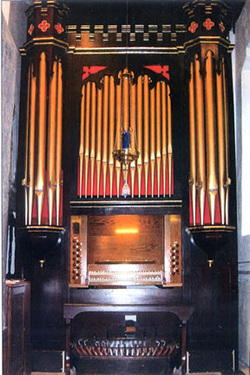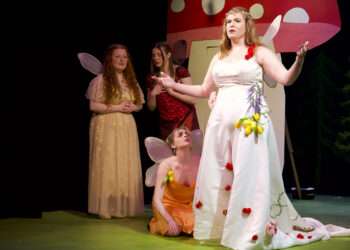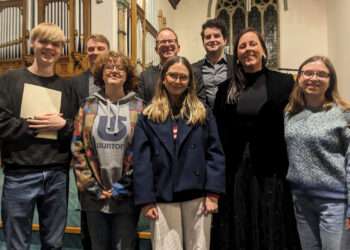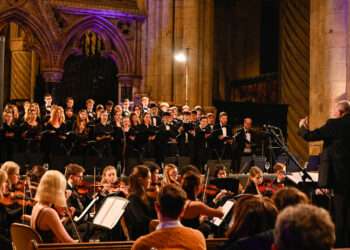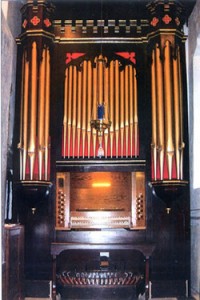 There’s been a lot of organ music on my radio this week, as Radio 3 has been celebrating the refurbishment of the organ at the South Bank Centre, and they’ve been belting out the big hitting pieces from the loud and dramatic end of the repertoire. Last night though, I was treated to a lovely contrast to all this at a recital of baroque chorale preludes played on the beautifully restored little organ at St Helen Auckland by the church’s organist Dr Ian Brunt.
There’s been a lot of organ music on my radio this week, as Radio 3 has been celebrating the refurbishment of the organ at the South Bank Centre, and they’ve been belting out the big hitting pieces from the loud and dramatic end of the repertoire. Last night though, I was treated to a lovely contrast to all this at a recital of baroque chorale preludes played on the beautifully restored little organ at St Helen Auckland by the church’s organist Dr Ian Brunt.
The programme was built around Bach’s chorale preludes from the Orgenbuchlein and from the Neumeister collection – a collection of early Bach organ works that was unearthed at Yale University in the 1980s. Dr Brunt set Bach’s work in context by adding earlier chorale-based pieces by composers such as Scheidt, Sweeklinck and Buxtehude, and by his contemporary Telemann and the younger Krebs. It was particularly interesting to hear contrasting settings of the same chorale tune by different composers (particularly the ones with tunes that I already knew!) – from the earlier works, in which the melody sat fairly clearly on top of an interesting harmonisation, to Bach’s works where at times, it’s more a case of feeling the essence of the original tune buried deep within Bach’s dazzlingly inventiveness. Poor Telemann came off worst in this respect, particularly as his nice, but unimaginative setting of O Lamm Gottes unschuldig came after Bach’s Neumeister version (BWV 1095). What struck me about Bach’s version is that already, twenty years before he used this chorale melody in the opening of the St Matthew Passion, Bach’s treatment of the melody is so similar, with the tune blazing out trumpet-like, steam-rollering through the texture, as a great unshakeable statement of faith.
It would have been helpful though if the programme had given a bit more detail about what was being played – it turned out that Dr Brunt had played several different versions of some of the pieces, and without knowing all the chorale melodies really well, it was hard to keep track at times – which meant that the point of being able to compare different composers and track the development of the chorale was lost.
The organ at St Helen’s church is unusually good for a small village church. The instrument was completely rebuilt in 2008 (details and history are here on the church website) and on the whole, it has a lovely clear and delicate tone, although I could have done with hearing less of the rather wobbly and distracting tremulant that Dr Brunt used for a couple of the pieces. As all the chorales chosen had a Lent theme, so the overall tone of the recital was peaceful and contemplative, and the gentle registrations meant that the counterpoint was crystal clear.
The church has two more recitals planned in the near future – Dr Brunt plays again on Monday 5 May and on Friday 16 May, James Lancelot will visit.




